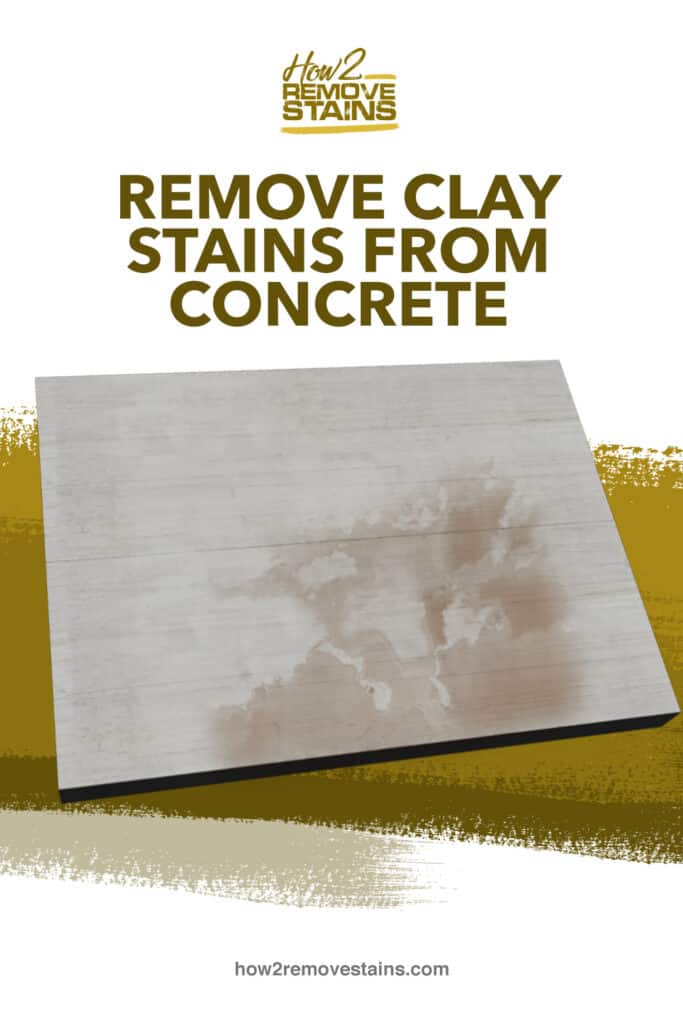Red clay stains on concrete can be undesirable to look at. If your concrete driveway or pathway ends up with clay stains, it is vital to remove them immediately to prevent them from setting.
Red clay stains are typically brought about by iron oxide or rust which is insoluble. Remember that power washing alone cannot get rid of the clay stains. The best way to deal with the clay stains is by using a combination of a chemical cleaner and a power wash. An acid-based cleaning product is highly recommended since it foams up the deeply embedded clay in the concrete. Read further to learn the effective methods on how to remove clay stains from concrete.
Table of Contents
Techniques on how to remove clay stains from concrete
The clay stains on concrete, typically the rust can be a common concern for most homeowners, especially those who are using well water. The reason for this is that well water is likely to contain high levels of iron. These stains can be undesirable to look at if not properly removed. Let us look at the methods on how to remove clay stains from concrete.
- Rinse and wash the concrete with soap and water first to make the cleaning more effective. After cleaning the surface of the concrete, allow it to dry thoroughly.
- Spray or pour lemon juice on the stained areas. The high concentration of citric acid in pure lemon juice makes it an ideal cleaning agent for rust stains. Let it sit for 10 minutes before scrubbing with a stiff-bristled nylon brush. For stubborn clay stains, use vinegar instead.
- Scrub the surface of the concrete. Create small circles to get rid of as many of the clay stains as possible.
- Rinse the concrete with cool water and allow to dry.
Dealing with stubborn clay stains
When dealing with stubborn clay stains that cannot be completely removed with vinegar or lemon juice, move on to the commercial cleaning products. For wide, stubborn clay stains, you need to use the heavy-duty cleaners. When working with these chemicals, some of the important considerations include working in a properly-ventilated area, use gloves and goggles and wear long-sleeved shirts and pants.
- Rinse off the concrete surface and allow it to dry before applying a heavy-duty cleaner.
- Use a cleaning product that includes oxalic acid. These products are often utilized to scour sinks without scraping them and work by lifting clay stains effectively. Depending on the variant you will use, spray or drizzle on the stained area. Leave in place for several minutes.
- For stubborn clay stains, you can use trisodium phosphate (TSP). Prepare a solution of ½ cup TSP with ½ gallon of hot water. You can buy TSP at any home improvement store. Pour this mixture on the stained surface and leave it in place for 15-20 minutes.
- Scrub using a stiff-bristled nylon brush and thoroughly rinse after the cleaner sets in. Brush in circles to lift the stains. Rinse thoroughly after and ensure that there is no leftover residue since it can cause discoloration.
- Hydrochloric acid can be used to remove clay stains which are considered the most effective. However, if it is left too long on concrete, it can cause a bluish discoloration, so you have to work quickly. Prepare a solution of 1 cup water with 2 cups acid. Leave the acid to soak into the stain for 5-10 minutes. Quickly scrub on the stain and rinse the surface thoroughly with water. The process can be repeated as needed.
A pressure wash can be used for hard to reach or stubborn stains. If you have difficulty in reaching a stain or cannot scrub any harder, allow the acid to soak on the clay stain for 10 minutes and set up a pressure wash. The pressure of the water not only rinses away all the acid but also places force on the stain where it is easily lifted away from the surface.
[crp]
Can you use bleach to clean concrete?
Concrete is susceptible to various types of stains. In most instances, concrete can end up soiled from dirt, mold, algae, mildew and other elements. Concrete driveways often end up with oil-based stains. The best cleaning approach is to use bleach to tackle the stains as well as eliminate dirt and algae.
A simple mixture of household bleach dispensed over the concrete supported by a hot water rinse can get rid of grime, dirt, mildew, and mold. In some cases, you can utilize a scrub or broom along with the bleach solution to clean out deeply embedded dirt.
Since concrete is porous, it can retain both stains and odors. When dealing with pet urine, pour bleach on the stained area and leave to soak on the surface for a brief period and rinsed after with hot water.
As for oil-based stains and other persistent marks, pre-washing the surface with bleach will ready the site for a power wash. In most instances, this will eliminate the stains.
What’s the best chemical to clean concrete?
Concrete driveways and pathways are both durable and sleek but can be stained. Rust, mold and other stains can mar the pristine beauty of your concrete, making them aesthetically unappealing. Although some marks can be washed away with a pressure washer, stubborn stains such as rust require an acid-based cleaner such as muriatic acid.
Muriatic acid is generally hydrochloric acid. It is considered as the most potent acid-based cleaner obtainable in the market and should be used carefully. It can effectively clean tough stains on concrete.
Just remember to wear proper protective gear since muriatic acid can burn the skin as well as damage most materials including metal. It is sold in a specific type of plastic and must not be stored in a different container. Take note that muriatic acid can generate toxic fumes, so it should not be used indoors or if children or pets are around.
Will straight bleach harm concrete?
When bleach is applied directly to concrete, it will not damage the material. It can eliminate any unwanted spots and matter from the surface such as moss and mildew as well as disinfecting the concrete.
Bleach must be used in a properly-ventilated area since the fumes it produces can be overpowering. Depending on your task, it is best to mix bleach with detergent, combine it with water or use it directly.
Although bleach will not damage concrete, it has the potential to corrode a sealant or paint that was put on the concrete. If utilized to wash concrete tile grout, the bleach can corrode the sealant. Before application on concrete, it is vital to consider the effects of bleach on any sealant present on the concrete surface.
Final thoughts
Clay stains on concrete can cause unsightly reddish discoloration. If these stains are present on your concrete driveway or pathway, it can degrade the overall aesthetic appeal of your house. With the methods discussed on how to remove clay stains from concrete, you can keep concrete surfaces clean and stain free.


